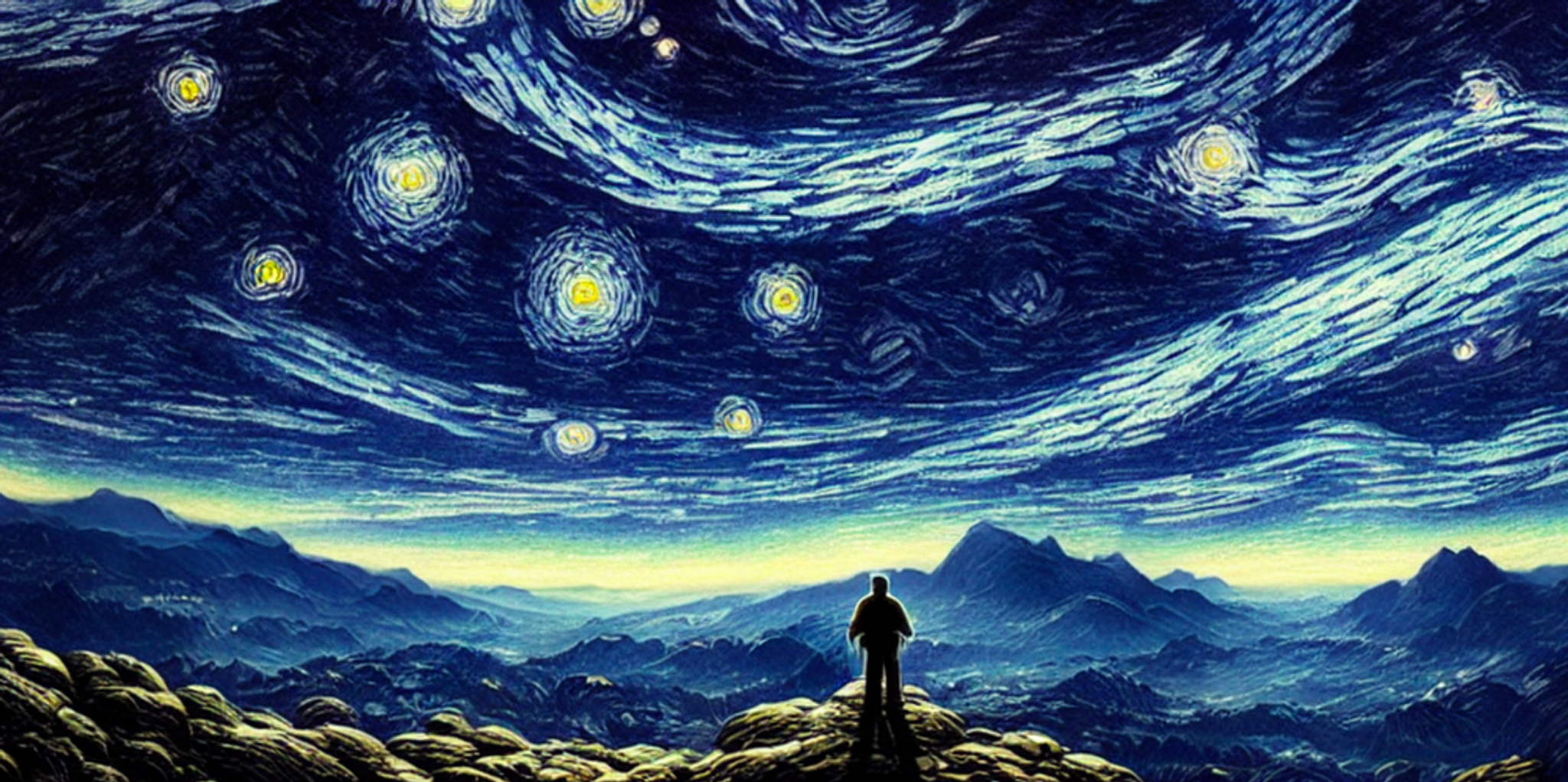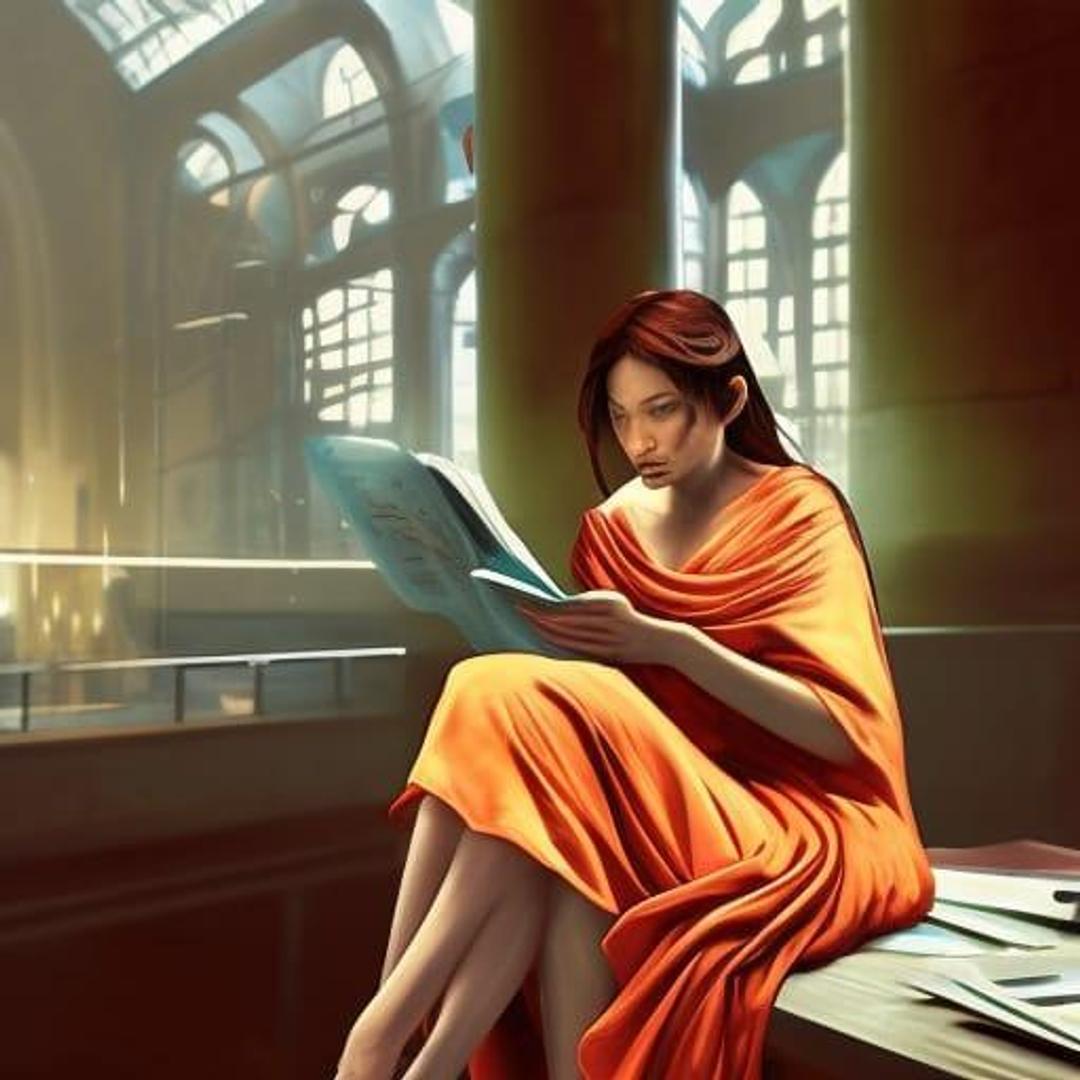4 Mar, 2023
views
On Art and AI
by

Ikram Hossain Akif
~3 min read
Share this blog

Unless you’ve been living under a rock, you’ve definitely heard of the advancements of AI generated art. You know, how certain AI-assisted services take in a few words and spit out multiple breathtaking pieces in minutes. Words to impeccable pictures. This is nothing short of the future knocking at our doorstep and taking the world by storm. But what is it anyway, how does it work, and what does it mean for the world of art?
Artificial intelligence models are commonly used in the mainstream media to refer to algorithmic systems that utilise various tools in machine learning, like neural networks, to effectively infer answers from limited information with improving accuracy. It does so by training with vast amounts of data. If the results are far from desirable, it is ‘punished’ with a heavy cost and is told to adjust to better align with its defined purpose. This is repeated until we get a system that learns from its errors and aligns well with our set margins of error.
The essence of the ‘intelligence’ in AI is training on thousands of datasets for the system to learn and improve. That seems straightforward, but how do you interpret a few words to paint a picture for you? It started earlier this year with breakthroughs from AI research lab OpenAI with their deep learning text-to-image model DALL-E. It created janky yet impressive images from text. Soon enough, this blew up with countless others following the blazing trail like Midjourney, Nightcafe and Stable Diffusion.

The image up here was generated using Nightcafe with the prompt “student reading an article”. Although sometimes producing great results, these models are far from perfect, evident from the figure’s four legs, and a face from a 2003 video game. This goes to show that these AI models do not create any art themselves, but rather take snippets from its expansive library and put together what it thinks matches with the given prompts best. Clearly then, the quality of the product depends on the art it is trained on, and how accurately it is tagged.
The labelling comes from human input, organising art into boxes telling the machines what is what. Then who actually creates the art? Well, real talented artists. The internet is home to millions of artists and their work that anyone can view. It is used to build the necessary training datasets, often without their informed consent. Their art is consumed and chopped up on an unprecedented rate by the machine to spew out prompted images as it learns and adapts.
Such models being widely available decreases the value of creating art, hours after hours of discipline and talent poured into a single piece against a few words put into a website. Although the results may be pleasant, it lacks the emotion and purpose conveyed by an artist (and sometimes even basic anatomy). Profit-seeking entities and businesses however only see a reduction in cost for art, and not the repercussions of AI to artists themselves. This will lead to the art industry facing a radical shift, and leaving everyone caught up figuring out what it means for copyright laws, the online footprint of your art and what makes art valuable anymore.
Technology will always continue to evolve and change our lives in unimaginable ways. Even with something as human as creative expression, AI has begun making huge strides in the field, for better or worse. These AI models essentially steal art at a large scale and profit off it by selling access to consumers. We have no choice but to adapt to the technological changes that life brings, but do ask yourself, at what cost?
